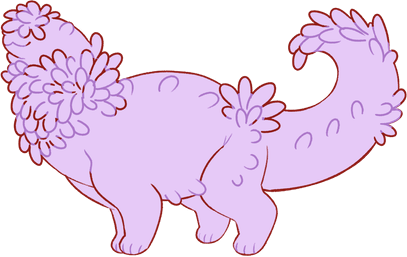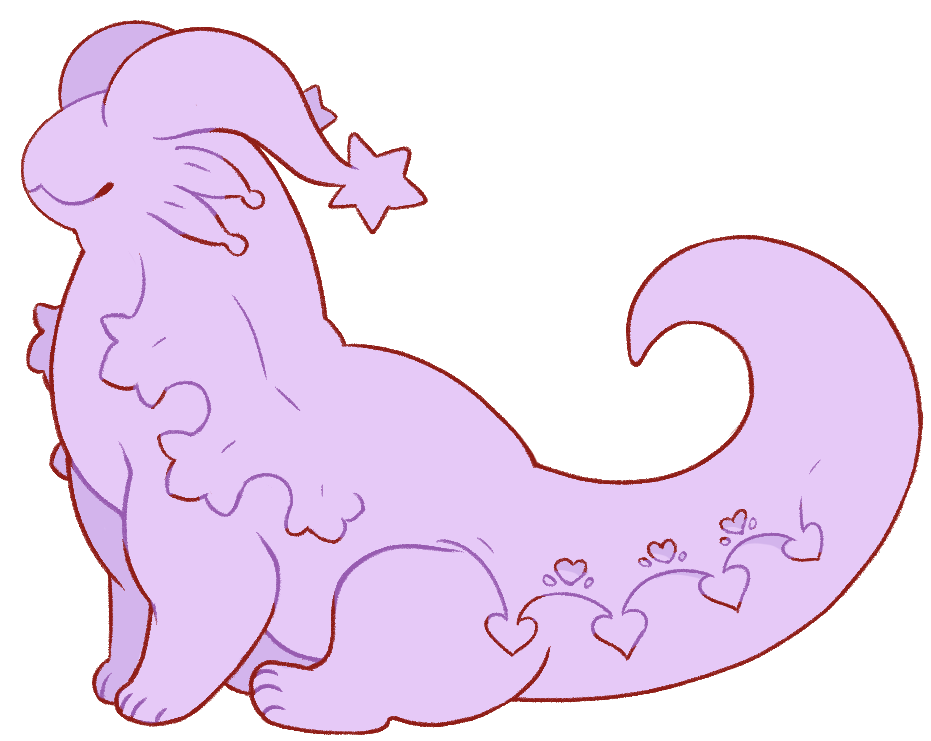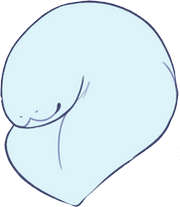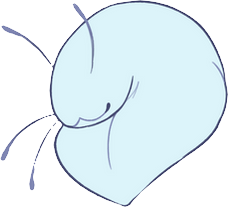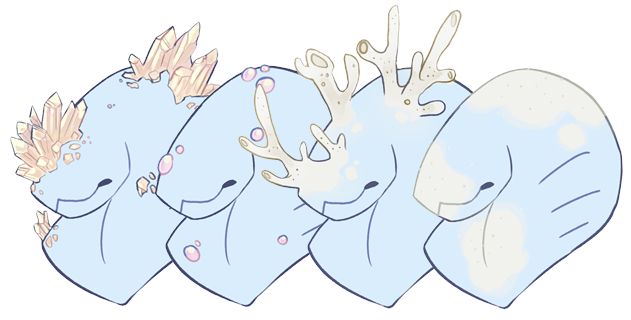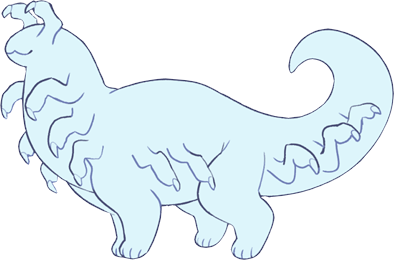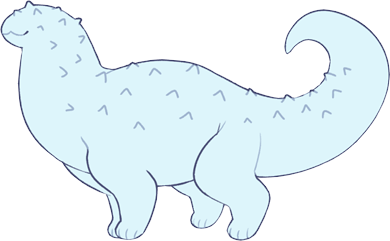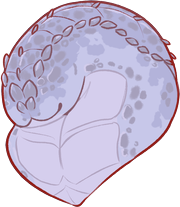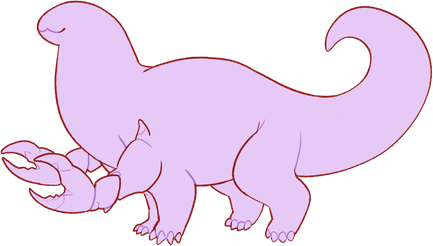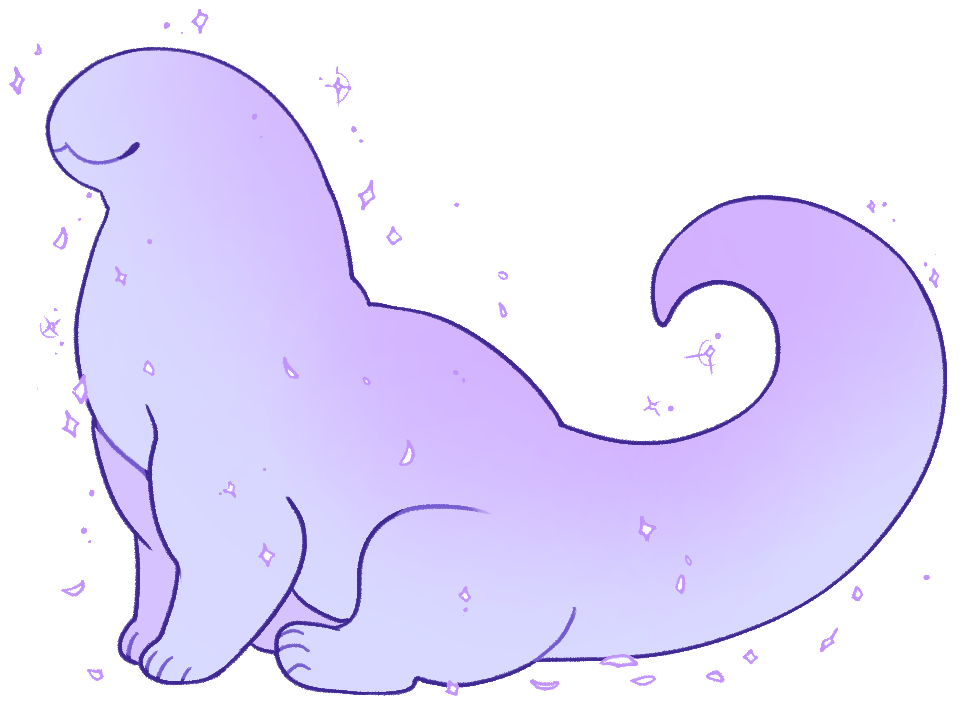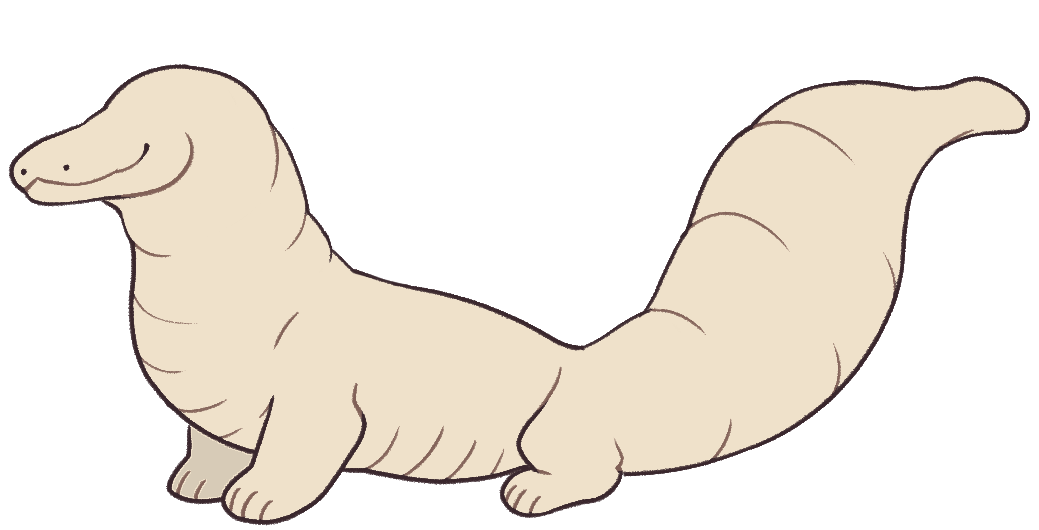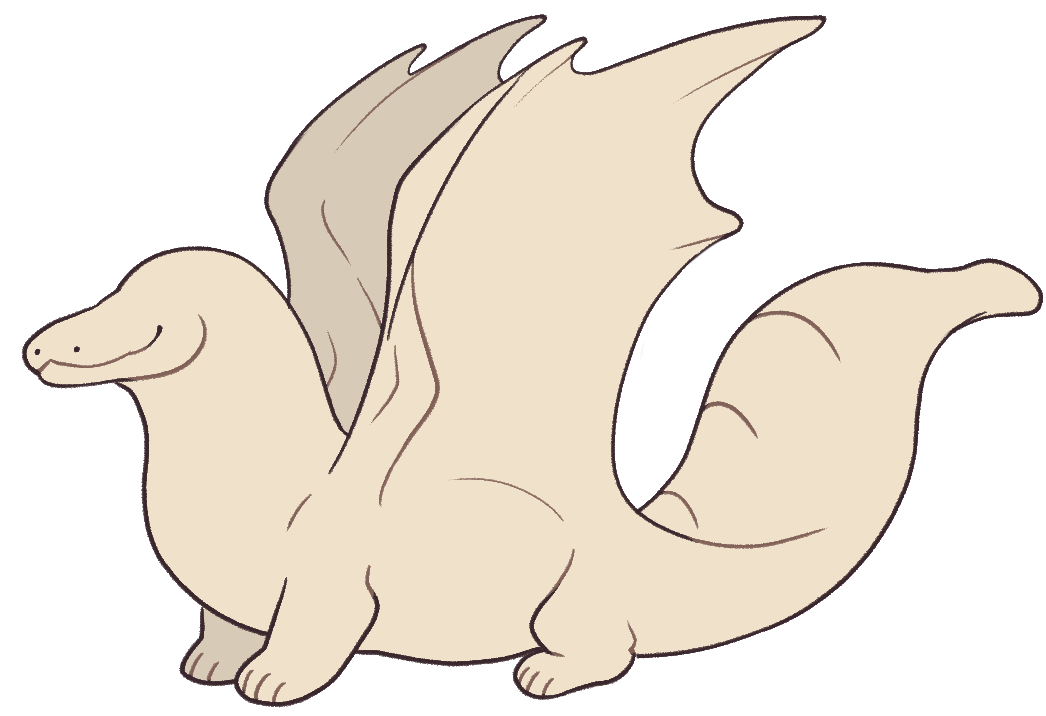Traits
Clustered feelers (Common Myth)
A feeler mutation in which feelers keep multiplying, vastly overgrowing the natural maximum of three in one spot.
These mutated feelers can often grow into each other and fuse, creating mutated feelers that are larger than the illustrated size.
Note: Only one upgrade is needed to apply this trait to the entire leech's body. This applies to both clustered numbers and oversize drapes; you do not need two upgrades to have both.
Ruffle Drapes (Potion)
[Item: Bunched Silk]
Drape feelers that are so thin they ripple like fabric. More extreme drapes may take the form of pleats, ruffs, and can even flare out around the paws, giving the appearance of sleeves.
These drapes are luxurious to look at, but incredibly easy to tear and may be indicative of overall fragile skin. Owners should take extreme care to keep their leech from roughhousing, or else they may sustain significant injuries.
Note: Ruffle drapes have the same limitations as normal feelers do, and maintain the same size restrictions as drape feelers.
Bunches of feelers cannot occur from one point in groups of more than three.
Deviations of these (i.e a long line of segmented or pleated feelers, more than two or three points, or more than three bunched feelers) will require the clustered feelers upgrade.
Decorative Feelers (Common Myth)
An odd mutation that has caused simple flat shapes to grow from the tips of otherwise normal feelers. Some drapes may also be seen sporting decorative perforations, resembling very basic lace!
Note: This is an additive trait that still requires regular feelers.
Unusual feeler shapes that alter the entire shape of the feeler will not be allowed. Visually the shapes should still look connected, i.e no line separating the feeler from the shape.
Sensory pores (Normal)
Extra sensitive pores that have developed above the leech's mouth, similar to ones occurring in sharks and catfish.
Many people new to the creatures mistake them for nostrils, but this is not the case! They act as sensory pits, detecting vibrations in the water. On land, they are functionally useless.
Note: These should only be very small dots or squished little lines - longer lines that bear too much resemblance to actual nostrils are not allowed!
Whiskers (Normal)
Thin, wiry feelers that behave similarly to those found on mammals and catfish.
Whiskers provide the leech with a sensory boost, giving them better perception of their surroundings. This trait is a popular pick for mammalian-esque pets.
Bioluminescence (Normal)
Similarly to certain plants and plankton, this trait expresses itself in the form of glowing spots, markings, or body parts on the leech!
It's noted that the glow is stronger in well-fed leeches. The glow can be turned on and off at will, a recent development previously thought impossible because observed pets preferred to keep their lights on even as they slept.
Wild leeches use it as a lure to draw in all manner of prey, and tend to have lightning-fast reflexes to quickly snatch up their food.
Floating object (Uncommon Myth)
A mythical trait controlled more often than not by a leech's developing psychic abilities or natural magnetism.
It's never hard to pinpoint a leech with floating objects, as they will have something levitating close to their body! These objects vary from leech to leech and may be something the leech values, a man made accessory, or even things like appendages and eyeballs.
Whether or not the object can be pulled from the leech's grasp is entirely up to the leech, but it's a better idea to let them be, just in case there are other more dangerous psychic abilities that the creature is hiding.
Note: This allows for one object per upgrade, but multiple upgrades can be made for more objects.
Floating appendages will require an extra limb upgrade.
Floating eyes are non-functional.
Gills/Pores (Normal)
Pockets on a leech's body that facilitate breathing.
Gills are more common on water-dwelling leeches, while pores naturally contain condensed moisture that makes land-dwelling breathing far easier.
Pores can be specially shaped and also have a high tendency to ooze colored slime, especially when the leech is stressed. This slime can be a different color to the flesh of the pores.
Note: Gills are required on Saltwater class leeches!
Pore slime amount can vary from a little to a lot, and can glow, but must be one color.
Fish Scales (Saltwater)
A naturally occuring trait in many Saltwater class leeches.
Much like saltwater fins, these scales can take the shape of any present on marine creatures.
There is a bizarre argument in some online circles that insists leeches with this trait are undeniably "smooth as the finest silks".
Note: The non-saltwater class variant of this is the myth trait Keeled Scales.
Salt deposits (Saltwater)
Salt deposits sometimes collect on a saltwater leech in various shapes and forms.
Wild saltwater leeches will often find rough sand or stones to scratch these deposits off; these 'scratching posts' will often be used by several different leeches and are popular as wildlife tourist spots to view them from afar.
These may also be grown purposely, either for the purpose of selling it or for the purpose of decorating a pedigree saltwater leech. Removing the salt deposits doesn't harm the leech, but it is harmful when the salt deposits are artificially grown to cover large areas of the leeches body and especially if the salt covers its gills.
Tragically, some saltwater leeches with less sought after traits are used as salt harvest slaves until they die.
Grabber claws (Normal)
Grabber claws are advanced, dexterous feelers with a spike on the tip.
Leeches with this trait can easily maneuver through thick brush and vines and as working animals they are great at multitasking.
It's very common to see many grabber claws along the entire length of a leech's body. It pairs extremely well with centi tail for added dexterity.
Spines (Normal)
Tall, curved, and sharp extensions, sometimes webbed to act as makeshift fins, they’re usually located on the leech’s back.
They’re typically used for self defense and for intimidation, but since the leech can’t reach these spines random items may end up comically impaled on them.
Spikes (Normal)
Similar to spines, these protrusions tend to be shorter, thicker and more conical, and can cover any parts of the body.
Keeled Scales (Uncommon Myth)
Keratinous protrusions on the skin.
These can vary from tiny fishlike scales and clawlike shapes, to rough chunks or armor plate. They can cover any amount of the leech's body.
Pincers (Common Myth)
Advanced grabber claws, covered in hard carapace.
Leeches with pincers seem to be smarter than your average leech, as besides using their pincers to hold onto prey they have also been observed to hold and make use of tools. This trait is often coupled with the scorpion tail trait.
Note: This allows for one pair of pincers per upgrade, but multiple upgrades can be made for more pincers.
Accessories (Normal)
While not actual traits, sometimes it's good to differentiate what is and isn't part of the leech.
Note: An alternative 'naked' image of the leech must be provided if the accessories cover up some traits or too much of the leech's body, such as with a large hat or a cape.
Glitter Shed (Potion)
[Potion item]: Glitter Salt
A somewhat unpleasant skin condition that causes the leech to shed particles.
Most of the time the leech's skin dries out or calcifies into rough shapes, sloughing off constantly in a delicate rain of glittery pieces.
It's very pretty to look at, but many disgruntled pet owners often find themselves vacuuming several times a day to manage the mess, and spend a fortune on skin lotions to stop the leech from itching constantly.
Ribbed Skin (Cave)
Rolls of skin that pinch inwards, creating a soft ribbed look.
Visually similar to Grub Tail except on any part of the leech's body (including partially), ribbed skin is present in cave leeches that have a tendency to gorge themselves on whole prey, expanding to fit a much greater capacity of food.
While any leech can have wrinkled skin, Ribbed skin actually adheres to additional pockets of fat stores rather than being a simple loose epidermis.
Note: To prevent confusion with Keeled Scales, the lines should not be fully solid the entire way around the body or across the applied area - include gaps to show that it's soft and fat!
Cave Wings (Cave)
Appearing in far greater numbers than on their aboveground cousins, wings on cave leeches are so commonplace their rarity was declassified from mythical down to normal.
The lack of bones in cave leeches means that these wings are likewise unusable for powered flight, but they are adept gliders once they climb high enough to gain momentum.
Note: The rarity is Cave Leech exclusive - for non-cave leeches you will need to use the myth trait Wings. It is otherwise identical to the Wings trait, including appearance and functionality.
More than one pair of wings will require the Extra Limbs myth trait!
Sailfin (Potion)
[Item: Sail Shell]
A large singular semi-rigid fin that forms in a smooth curve, supported by cartilaginous spokes. It's thought that this is a feeler mutation, due to its consistently simplified shape.
Leeches with this trait have reduced mobility, although those with a sailfin tail are incredibly powerful swimmers for short bursts.
Note: One sail per trait application! Sails on the head do not count as horns.
